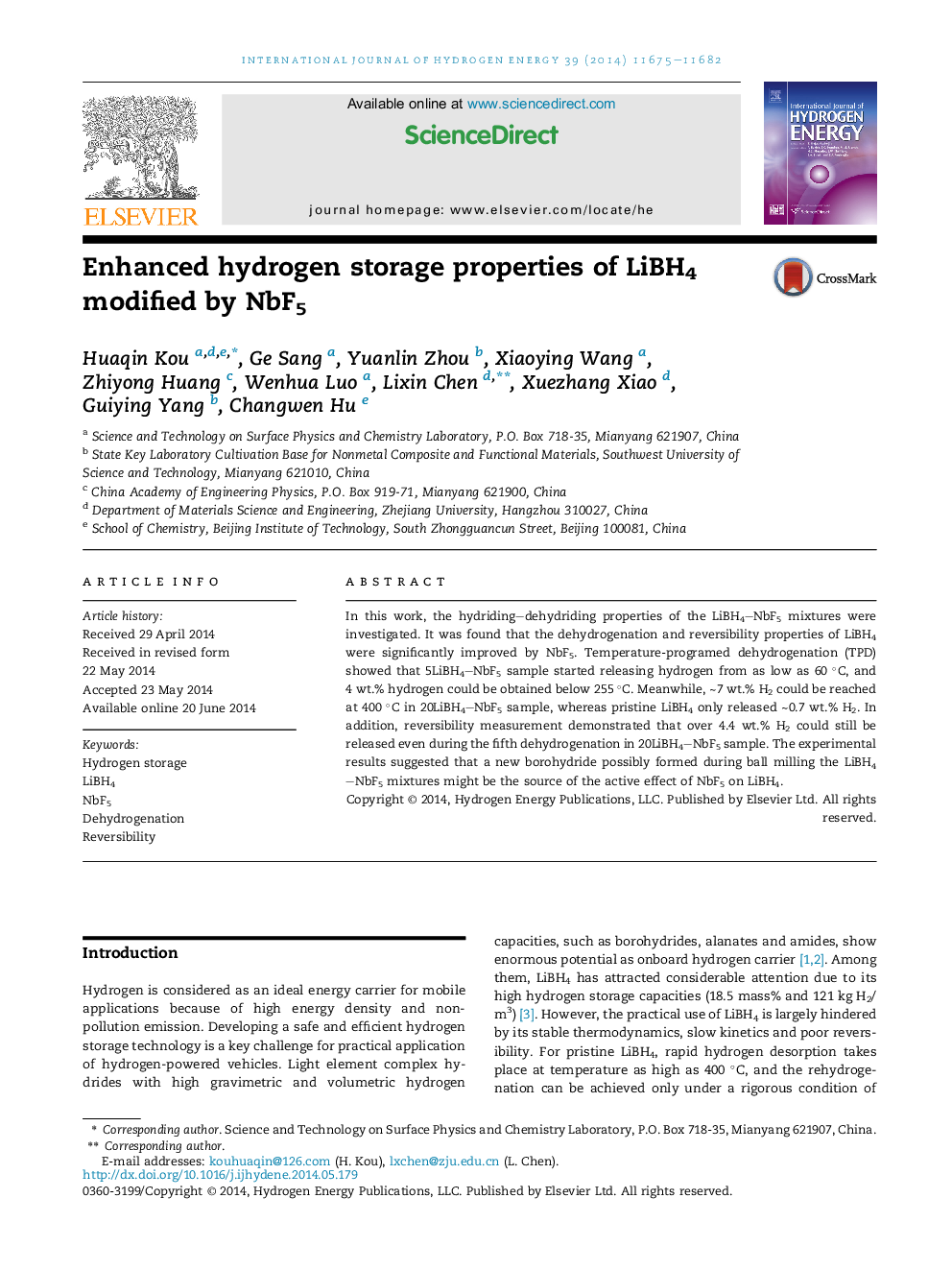| Article ID | Journal | Published Year | Pages | File Type |
|---|---|---|---|---|
| 1273187 | International Journal of Hydrogen Energy | 2014 | 8 Pages |
•The dehydrogenation and reversibility of LiBH4 were significantly improved by NbF5.•LiBH4–NbF5 samples started releasing hydrogen from as low as 60 °C.•4 wt.% hydrogen could be obtained below 255 °C in 5LiBH4–NbF5.•Over 4.4 wt.% H2 could still be released even for the fifth cycle in 20LiBH4–NbF5.
In this work, the hydriding–dehydriding properties of the LiBH4–NbF5 mixtures were investigated. It was found that the dehydrogenation and reversibility properties of LiBH4 were significantly improved by NbF5. Temperature-programed dehydrogenation (TPD) showed that 5LiBH4–NbF5 sample started releasing hydrogen from as low as 60 °C, and 4 wt.% hydrogen could be obtained below 255 °C. Meanwhile, ∼7 wt.% H2 could be reached at 400 °C in 20LiBH4–NbF5 sample, whereas pristine LiBH4 only released ∼0.7 wt.% H2. In addition, reversibility measurement demonstrated that over 4.4 wt.% H2 could still be released even during the fifth dehydrogenation in 20LiBH4–NbF5 sample. The experimental results suggested that a new borohydride possibly formed during ball milling the LiBH4–NbF5 mixtures might be the source of the active effect of NbF5 on LiBH4.
